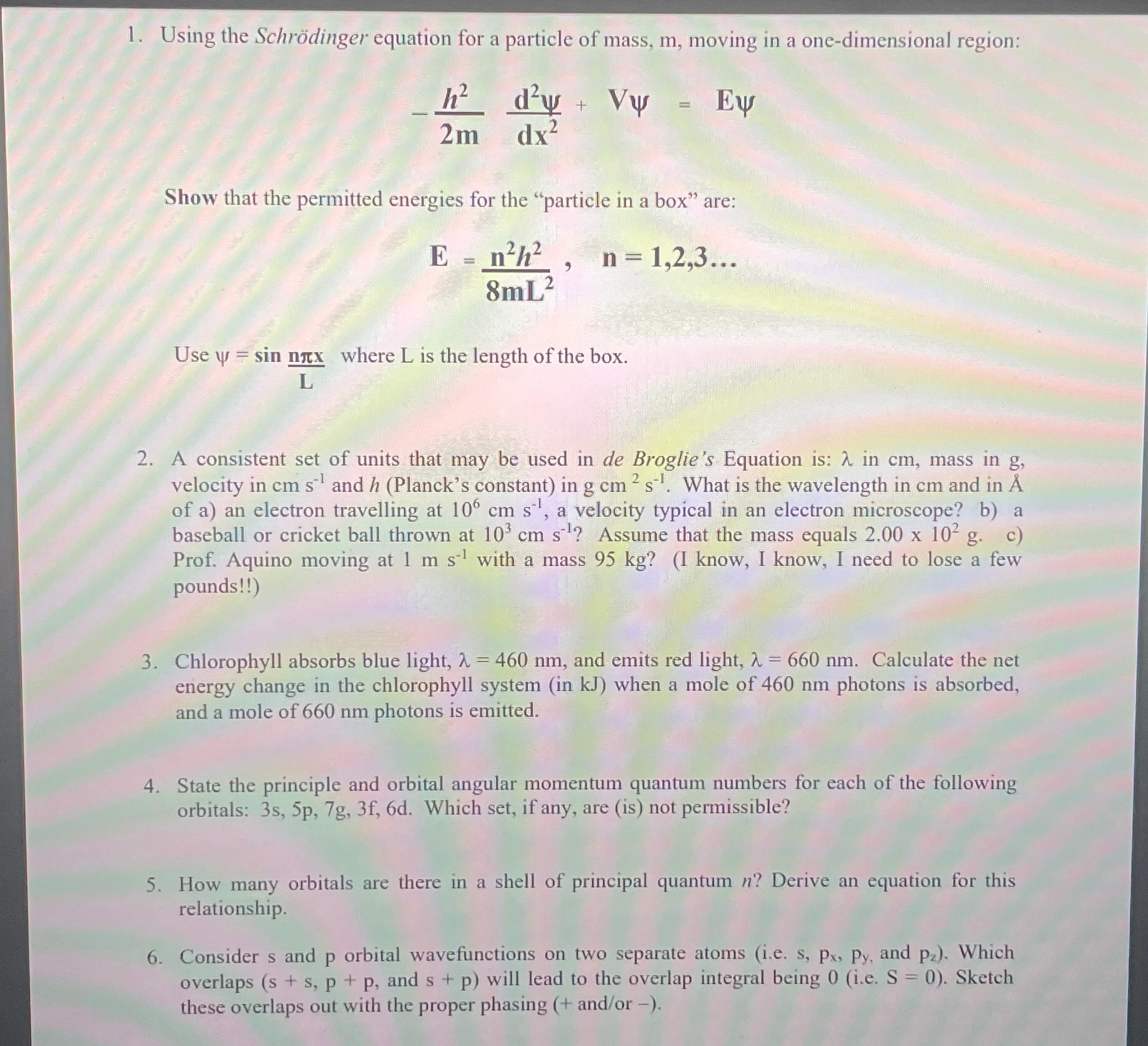Answered step by step
Verified Expert Solution
Question
1 Approved Answer
Using the Schr dinger equation for a particle of mass, m , moving in a one - dimensional region: - h 2 2 m d
Using the Schrdinger equation for a particle of mass, moving in a onedimensional region:
Show that the permitted energies for the "particle in a box" are:
dots
Use where is the length of the box.
A consistent set of units that may be used in de Broglie's Equation is: in mass in velocity in and Plancks constant in What is the wavelength in and in of a an electron travelling at a velocity typical in an electron microscope? b a baseball or cricket ball thrown at Assume that the mass equals c Prof. Aquino moving at with a mass I know, I know, I need to lose a few pounds!!
Chlorophyll absorbs blue light, and emits red light, Calculate the net energy change in the chlorophyll system in when a mole of photons is absorbed and a mole of photons is emitted.
State the principle and orbital angular momentum quantum numbers for each of the following orbitals: Which set, if any, are is not permissible?
How many orbitals are there in a shell of principal quantum Derive an equation for this relationship.
Consider and orbital wavefunctions on two separate atoms ie and Which overlaps and will lead to the overlap integral being ie Sketch these overlaps out with the proper phasing andor

Step by Step Solution
There are 3 Steps involved in it
Step: 1

Get Instant Access to Expert-Tailored Solutions
See step-by-step solutions with expert insights and AI powered tools for academic success
Step: 2

Step: 3

Ace Your Homework with AI
Get the answers you need in no time with our AI-driven, step-by-step assistance
Get Started


